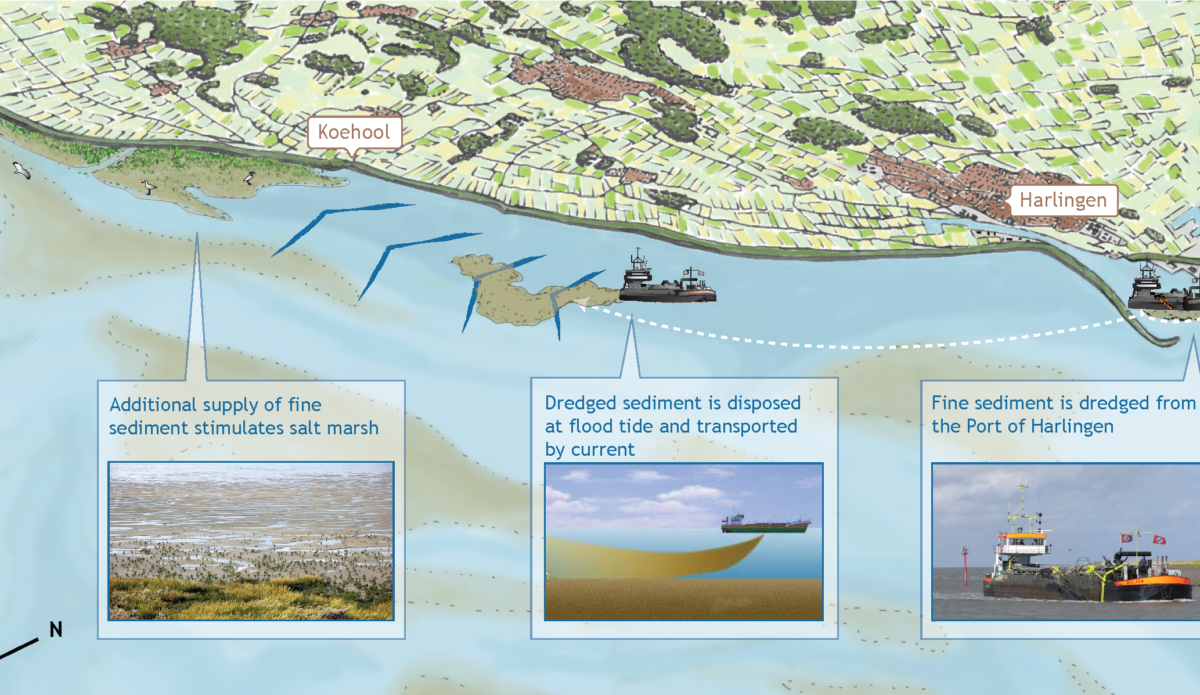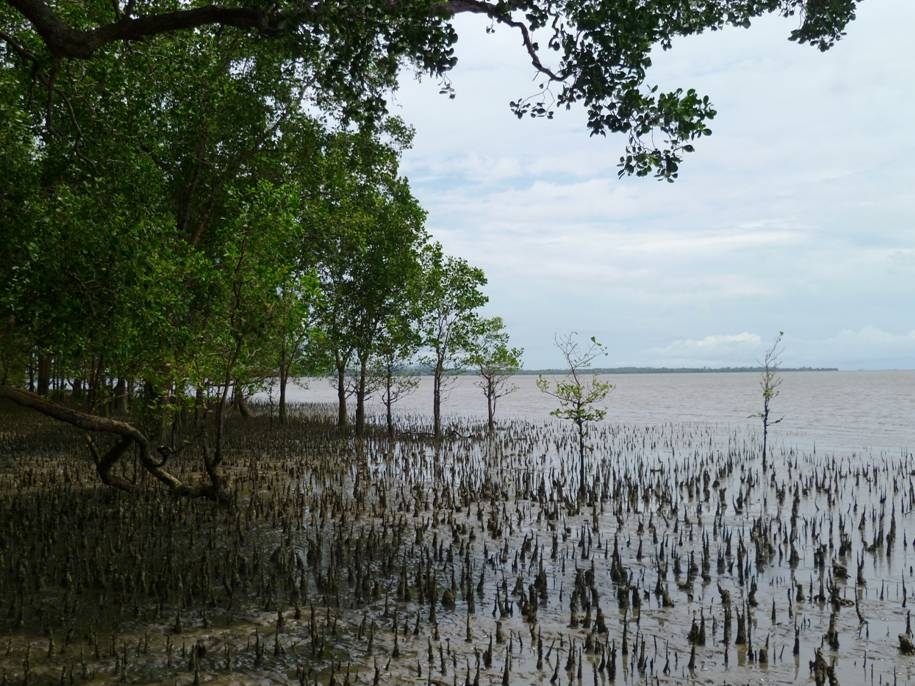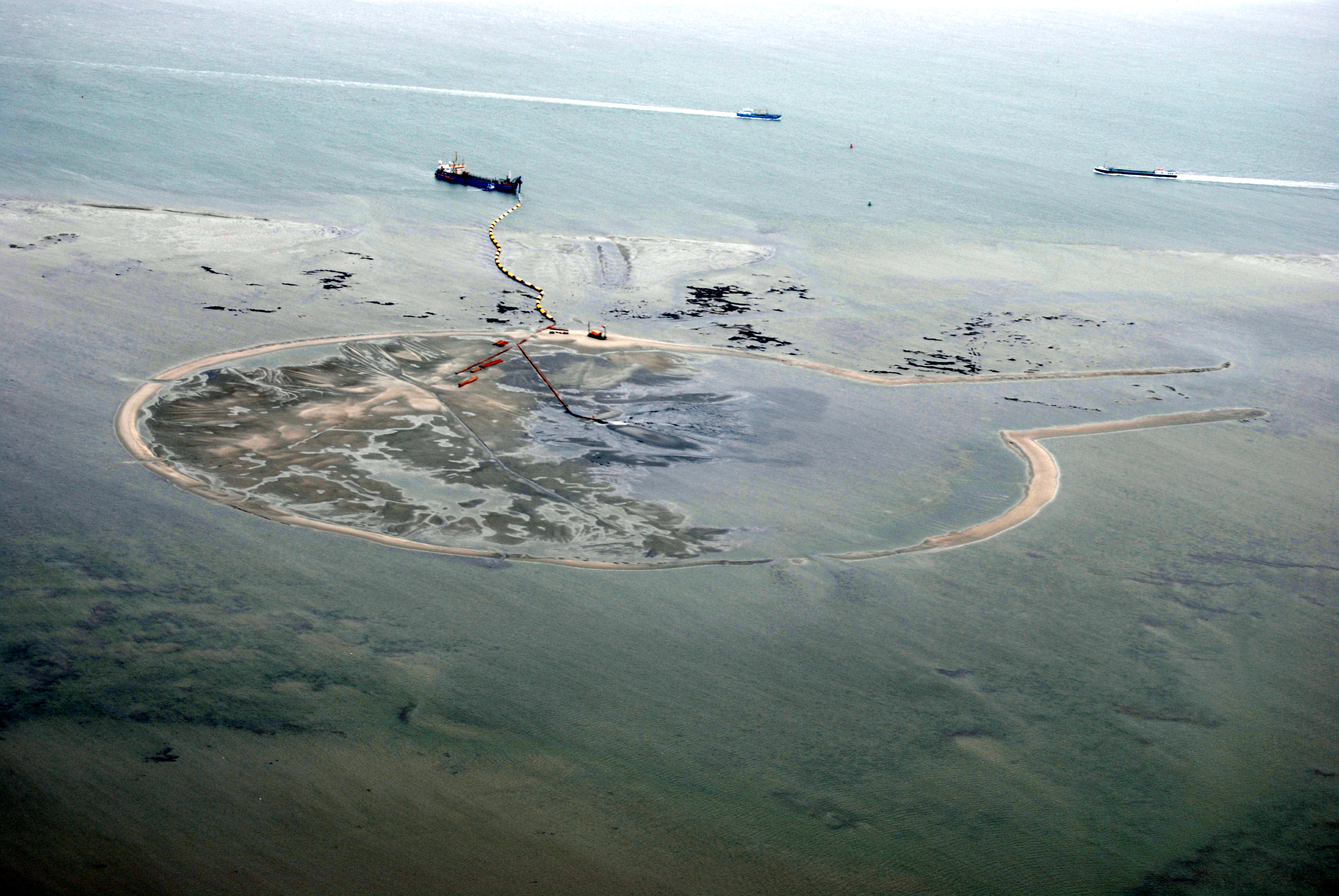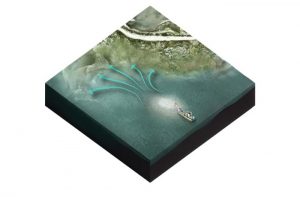Practical Applications
Several projects have been executed in which fine sediments are intentionally used to stimulate sustainable developments.
[ez-toc]
Mud Motor port of Harlingen – Koehoal, NL
To safeguard navigation, about 1.3 million m3 of mainly fine sediments are dredged in the harbour basins of the Port of Harlingen. The dredged sediment is placed in a designated area in the Wadden Sea, in the vicinity of the harbour. Within the Building with Nature case “Ports of the Wadden Sea” the idea was raised to place the dredged sediments further north of Harlingen as a semi-continuous source of sediment: The mud motor. The sediment is expected to be transported by natural processes further into the area. The extra input of sediment is expected to lead to the formation and extension of salt marshes. This would yield three favourable effects:
1. Less re-circulation towards the harbour, hence less maintenance dredging;
2. Promotion of the growth and stability of salt marshes, improving the Wadden Sea ecosystem; and
3. Stabilising the foreshore of the dykes, and therefore less maintenance of the dyke.

An underlying hypothesis of this Mud Motor concept is that mud (e.g. dredged from a nearby channel or port) that is supplied to a tidal current can be picked up by that current so that it achieves its maximum transporting capacity. Higher mud concentrations in the currents that feed a salt marsh will likely speed up marsh development processes, while maintaining the desired gradients that are associated with natural salt marsh development.
Rehabilitation of a mangrove-mud coast in Timbul Sloko (Java, Indonesia)
Mangrove belt establishment has been widely promoted as an alternative means to enhance coastal resilience. However, mangroves can only be successfully restored if the abiotic conditions are optimal (bathymetry, fresh water and sediment input). Most pilots, where this principle has been trested, do not reinstate these conditions and they fail to stabilise eroding coastlines. Long-term success rates of mangrove replantation are as low as 5-10%.

This pilot tests whether siltation in marshes can be triggered by building grids of permeable structures as a means of land reclamation and eventually, at higher elevations, mangrove growth. The ultimate aim is restoration of the natural mangrove – mud coastal system in Java. This approach is inspired by the Dutch salt marsh works. Fine sediments (mud) play a crucial role in the hypothesis tested in this pilot project.
Tidal flat nourishment – Galgeplaat, NL
Tidal flats are valuable habitats for different plants and animals and are important for coastal protection. However, the total area of tidal flats is decreasing worldwide due to various problems like sea level rise, coastal squeeze, subsidence by gas extraction and erosion initiated by man-made constructions. The construction of a storm surge barrier and compartmentalisation dams in the Eastern Scheldt in the 1980’s is one example of a man-made structure that resulted in a change in hydrodynamic conditions of the Eastern Scheldt estuary and hence the sediment equilibrium. As a result, channels are filling in and tidal flats inside the estuary are eroding. Nourishing tidal flats with sediment might be a promising solution to mitigate these effects.

To test this approach, a small area of the Galgeplaat, a tidal flat in the Eastern Scheldt, was nourished in 2008 with 130.000 m3 sand dredged from adjacent channels over a total area of 150.000 m2. The processes of sediment distribution on the flats and benthic recolonization interact with each other. Therefore the design challenge is to find an optimum to reduce the initial impact of the nourishment on the benthic fauna, while optimizing the distribution of the sand over the tidal flat by wind and waves and the subsequent recovery of benthic life.

